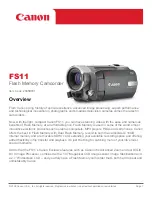
145
Do’
s &
Don’t
s
E
Although the battery pack’s operating temperature range is from 32
°
F to 104
°
F (0
°
C
to 40
°
C), the optimal range is from 50
°
F to 86
°
F (10
°
C to 30
°
C). At cold
temperatures, performance will temporarily decline. Warm it in your pocket before use.
Replace the battery pack if the usable time after full charge diminishes substantially at
normal temperatures.
About the battery terminal cover
The battery terminal cover has a [
]-shaped hole. This is useful when you wish to
differentiate between charged and uncharged battery packs. For example, with charged
battery packs, attach the terminal cover so that the [
]-shaped hole shows the blue
label.
Cassette
Rewind tapes after use. If the tape becomes slack and damaged, it may cause picture
and sound distortion.
Return cassettes in the case and store them upright.
Do not leave the cassette in the camcorder after use.
Do not use spliced tapes or nonstandard cassettes as they may damage the
camcorder.
Do not use tapes that have been jammed as video heads may become dirty.
Do not insert anything into the small holes of the cassette, or cover them with
cellophane tape.
Handle cassettes with care. Do not drop or subject them to severe impact as this may
damage the cassettes.
Rewind tapes from time to time if they are stored for a long time.
With cassettes equipped with a memory function, metal plated terminals may become
dirty with use. Clean the terminals with a cotton swab after about 10 times of loading/
unloading. The memory function is not supported by the camcorder.
Protecting Tapes from Accidental Erasure
To protect your recordings from accidental
erasure, slide the tab on the cassette to SAVE
or ERASE OFF.
If you load a protected cassette in CAMERA
mode, the message “THE TAPE IS SET FOR
ERASURE PREVENTION” appears for
approx. 4 seconds and “
” starts flashing. If
you wish to record on that cassette, change
the position of the tab.
Back side of the
battery pack
Terminal cover attached
Charged
Uncharged
SAVE
REC
SAVE
REC
















































